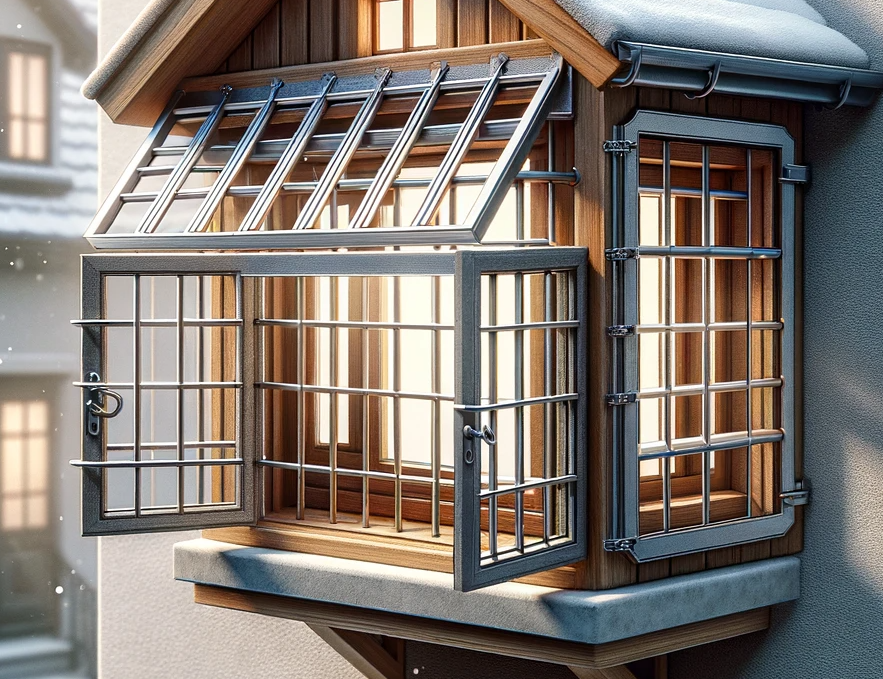In today’s fast-paced world, ensuring the safety of our loved ones and property is paramount. One often-overlooked aspect of home security is window safety. This comprehensive guide explores the significance of a window safety restrictor, shedding light on its installation, benefits, and frequently asked questions. With this knowledge, you can fortify your home, offering peace of mind for you and your family.
A window safety restrictor, often made of durable materials like steel or aluminum, is installed on the window frame. Its primary function is to restrict the window’s opening to a predetermined width. This prevents unauthorized access while still allowing for ventilation and emergency egress when needed.

Benefits of Installing Window Safety Restrictors
1. Enhanced Home Security
Bolstering your home security is the most apparent benefit of a window safety restrictor. By limiting how far a window can be opened, it deters burglars and intruders, making unauthorized access significantly more challenging.
2. Child Safety
If you have young children at home, a window safety restrictor provides peace of mind. It prevents curious kids from accidentally falling out of open windows, ensuring their safety.
3. Improved Ventilation
Despite the security measures, window safety restrictors still allow fresh air to circulate through your home. You can enjoy a cool breeze without compromising your safety.
4. Legal Compliance
In some regions, building codes mandate the installation of window safety restrictors, especially in high-rise buildings. Compliance with these regulations is essential to avoid legal complications.

Installing a Window Safety Restrictor
Installing a window safety restrictor is a straightforward process that can be done by homeowners or professionals. Here’s a step-by-step guide:
1. Gather the Necessary Tools
Before you begin, make sure you have the following tools and materials:
- Window restrictor kit
- Screwdriver
- Measuring tape
- Pencil
- Screws
2. Identify the Window Type
Different windows may require slightly different installation methods. Identify whether you have casement windows, sliding windows, or awning windows, and consult the manufacturer’s instructions.
3. Measure and Mark
Measure the desired opening width for your window and mark it on the frame. This is where you will install the restrictor.
4. Attach the Restrictor
Follow the manufacturer’s instructions to attach the restrictor to the window frame securely. Typically, this involves screwing it into place.
5. Test the Restrictor
Ensure the restrictor functions correctly by opening and closing the window. Make any necessary adjustments to achieve the desired opening width.
6. Regular Maintenance
Periodically inspect the window restrictor for any signs of wear or damage. Lubricate moving parts as needed to maintain smooth operation.

How does a window safety restrictor work?
A window safety restrictor limits the maximum opening width of a window, preventing it from opening wide enough for someone to enter or exit easily. It enhances home security and child safety.
Can I install a window safety restrictor on my own?
Yes, most window safety restrictors come with straightforward installation instructions, making it possible for homeowners to install them without professional assistance.
Are window safety restrictors suitable for all window types?
While window safety restrictors are compatible with various window types, it’s essential to ensure you choose one that matches your window style and size. Consult the manufacturer’s guidelines for compatibility.
Do window safety restrictors obstruct ventilation?
No, window safety restrictors are designed to allow for ventilation while maintaining security. They limit the window’s opening to a safe width, allowing fresh air to circulate.
Are window safety restrictors required by law?
In some regions, building codes mandate the installation of window safety restrictors, especially in buildings with children or vulnerable individuals. It’s crucial to check your local regulations for compliance.
How can I maintain my window safety restrictor?
Regularly inspect the restrictor for signs of wear or damage. Lubricate moving parts as needed, and if you encounter any issues, consult the manufacturer’s maintenance guidelines.

A window safety restrictor is a valuable addition to any home, providing enhanced security and peace of mind. By restricting the window’s opening, it serves as a deterrent to intruders while still allowing for ventilation. Whether you’re a homeowner looking to improve security or a parent concerned about child safety, installing a window safety restrictor is a practical choice.











